People pay up to $2,700 a month to live with 27 roommates in a NYC townhouse — see inside
Coliving company Cohabs has 14 homes in New York, where people rent rooms and share common spaces.
The NYC locations are occupied by Gen Zers and millennials, and can house up to 34 people.
See inside its Harlem house, where members pay up to $2,700 a month but say the perks are worth it.
Having roommates isn't uncommon in Manhattan, where the median rent is $4,230 a month, according to Douglas Elliman's most recent market report.
Living with a couple of people to defray the cost of rent is one thing — sharing space with up to 28 other people is, well, something else.
That's exactly what Cohabs, a Belgian-founded company specializing in coliving, offers. Shorthand for communal living, coliving typically involves individuals paying less rent and signing short-term leases to live in a fully furnished home with five or more other people.
For some, coliving is a convenient alternative to traditional apartment rentals.
The model was catapulted into the spotlight in February when Allison Wolf, a resident of one of Cohabs' share houses in Brooklyn, posted a TikTok giving an overview of her experience and the people she lives with.
"Who chooses to live in a house with 23 housemates?" she asks in the clip, which has over 2.5 million views.
Read on to find out — and for a sneak peek inside one of Cohabs' biggest homes in NYC.
Coliving spaces have increased in popularity recently.

Some say that modern coliving dates back to the early 2000s when Silicon Valley tech entrepreneurs lived and worked together in spaces known as "hacker houses." Others say it originated long before that, partly inspired by Danish communal kitchens or the kibbutzim of Israel.
Coliving entered mainstream dialogue around the time WeWork's controversial cofounder Adam Neumann launched a residential offshoot of his infamous coworking business. In 2016, Neumann said WeLive, a coliving venture, would challenge "conventional apartment living."
WeLive buildings contained dorm-like apartments with supplementary communal areas, like lounges and larger kitchens, to encourage a sense of community. Once touted as a "residential utopia," the grand promise of what WeLive could've been came crashing down when its parent company went public in 2019, The New York Times reported.
Where WeLive failed, other coliving companies have succeeded. Besides Cohabs, others operating in the US include Common, Habyt, and Outsite.
Cohabs makes big promises to revolutionize shared housing.
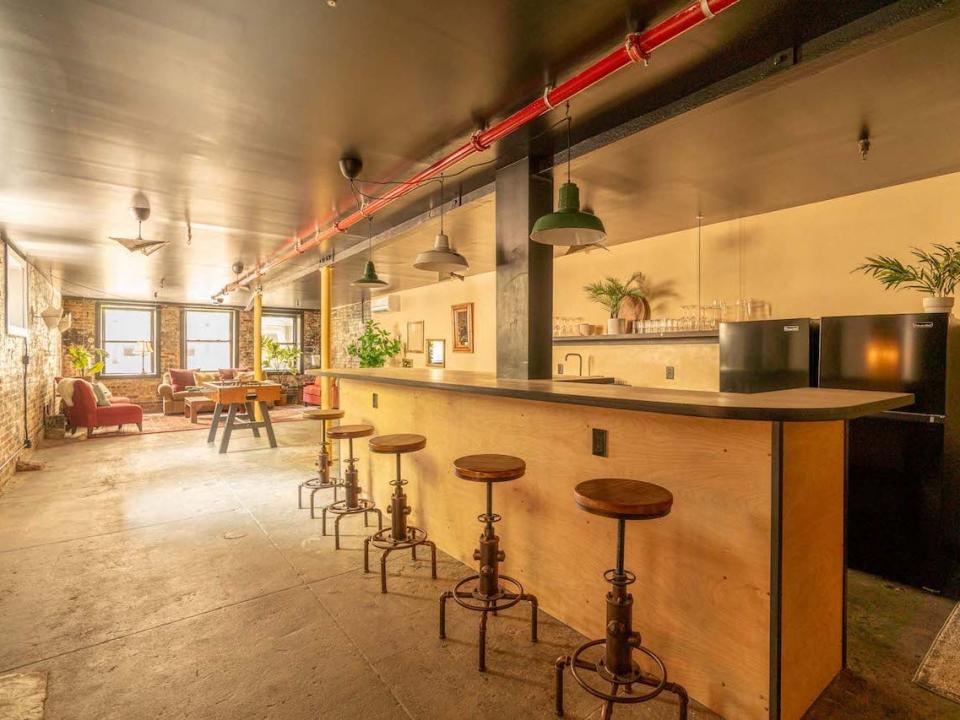
Cohabs says its mission is to foster community in its share houses. It offers short-term rental agreements ranging from three months to a year.
Amenities in its houses include gyms and lounges, and residents can gain access to in-house entertainment like parties, monthly catered breakfasts, and excursions.
There are 14 Cohabs houses in NYC, with five more expected to open in the next four months.
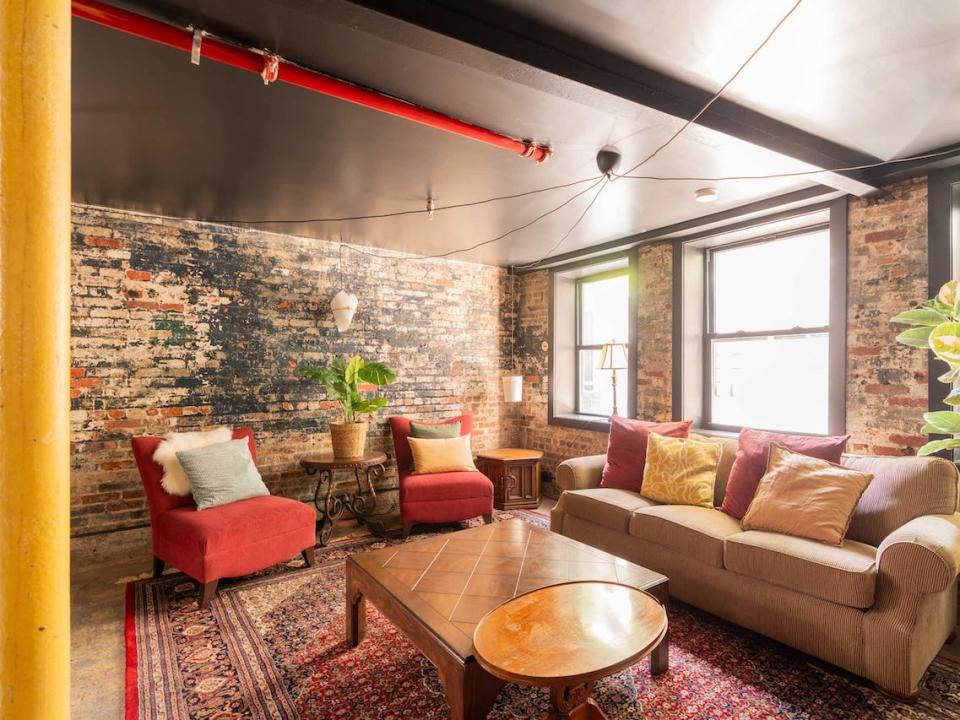
Cohabs has around 250 members — whom the company calls residents — across its 14 locations in NYC.
According to Dan Clark, the director of Cohabs in the US, the number of US members is set to grow to 400 by the end of 2024 as the company plans to expand in New York. It is opening a location in Washington, D.C., and eyeing Chicago for another one.
One of Cohabs' largest US homes is in Harlem, with 28 "roommates" over five floors.
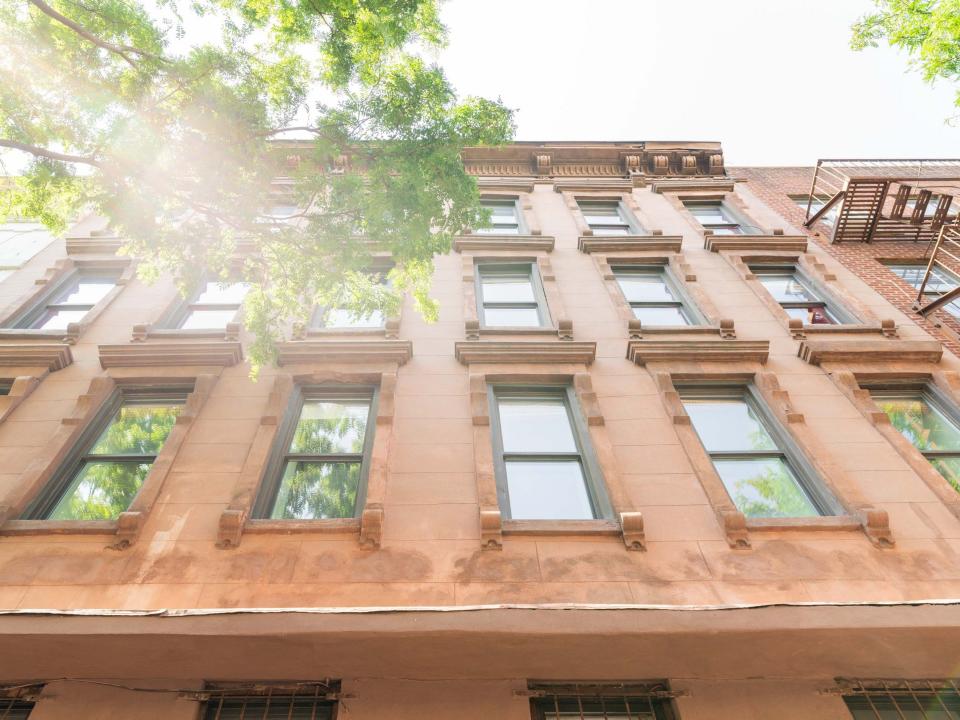
As of April, Cohabs' location in Harlem is one of its biggest in the US.
The building was dilapidated for years until Cohabs bought and renovated it, Clark said.
Now the building is home to 28 adults, ranging in age from 23 to 36. To live there or at any Cohabs house, prospective members submit an application through the website, undergo background checks, and get interviewed, Clark said.
Clark said his team and current residents give prospective residents tours of the homes, which not all coliving companies do as they aren't always physically "staffed" with employees on site.
Rent for a room at Cohabs' Harlem house ranges from $1,700 a month to $2,700 a month.
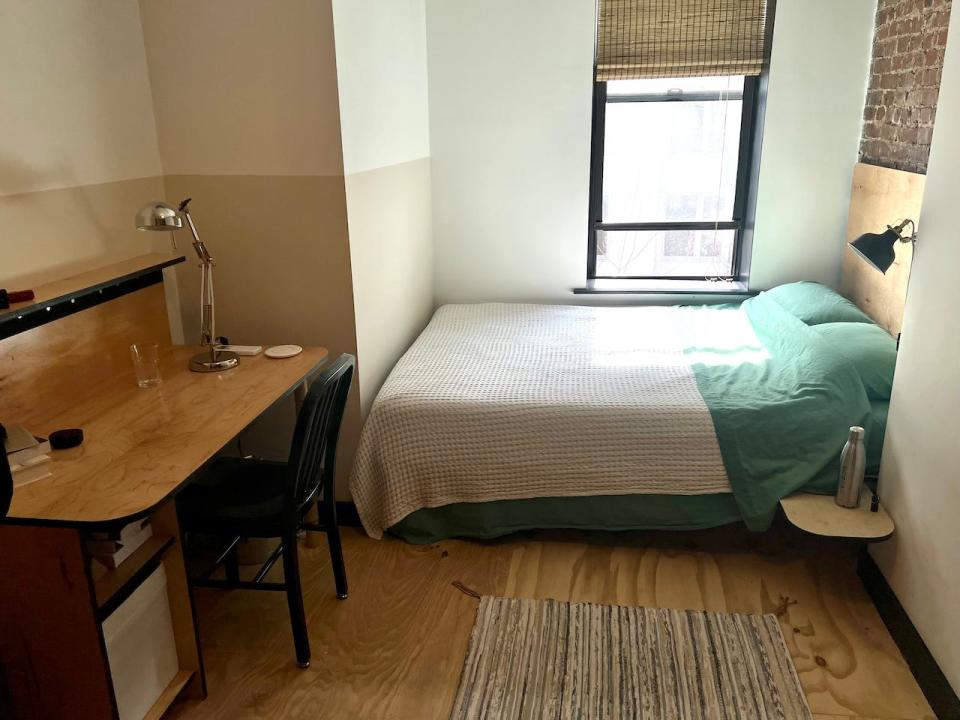
Rent depends on the location and type of accommodation members choose.
In Harlem, prices start at $1,700 a month for a room that is 74 to 160 square feet and go up to $2,700 a month for a room that is 200 square feet.
It's the prices that have caused a stir on social media. After Wolf, a member living in a Cohabs location in Brooklyn posted about her experience on TikTok. Her video received a wave of responses from people confused as to why members would pay thousands for relatively small rooms.
Cohabs member Elisa, who asked to be referred to by her first name for privacy reasons, told Business Insider that critics don't see how she and her housemates are paying for more than square footage.
Their rent covers furnished private bedrooms, utilities like WiFi and electricity, maintenance requests, and access to shared spaces like the gym.
Elisa, a 30-year-old business developer at a startup, pays around $2,000 a month for a 135-square-foot room in another Cohabs house in Harlem. She often stops by other Cohabs locations, including the bigger Harlem one, to visit friends.
"For this amount, I'm also paying for common spaces and the fact that their team is doing an amazing job at bringing a premium service," she said.
Meanwhile, Clark said the blowback Cohabs received on social media comes down to "a lack of knowledge" from those unfamiliar with the concept and the other facilities residents can access.
At the same time, he acknowledged that coliving isn't for everyone, so members can give 60 days' notice if they decide to move out before their agreed-upon term.
"If you don't like it, this is coliving. We don't want you to be miserable," he said.
Common areas include a large ground-floor kitchen, a gym, and three outdoor decks.
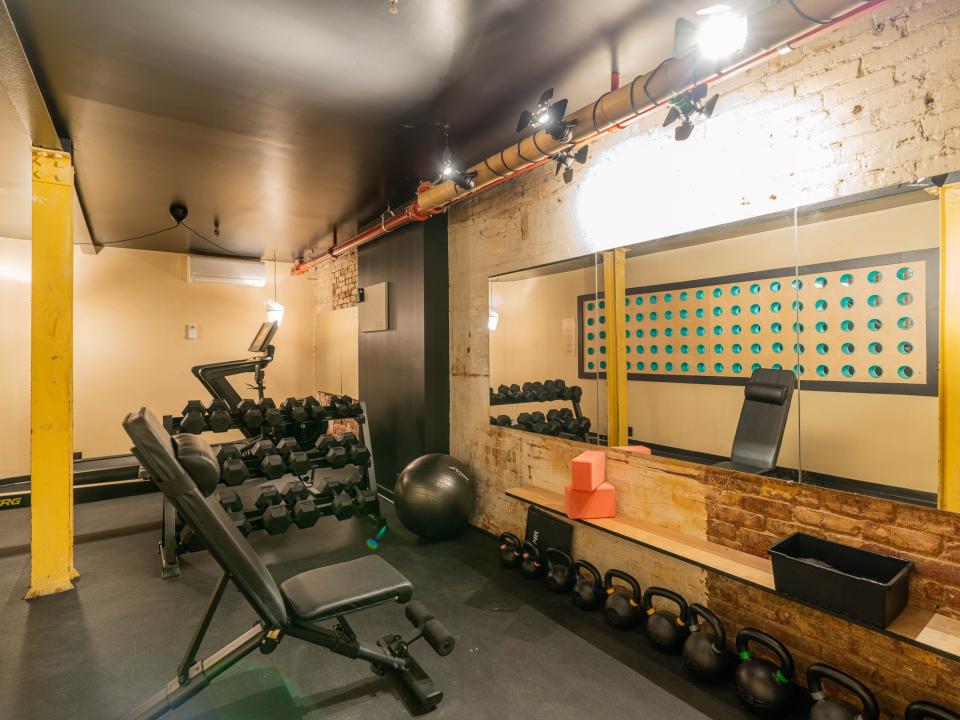
Most communal spaces in the Harlem Cohabs house are in the basement, including the large kitchen, several lounges, and the gym.
Despite having to share with nearly 30 roommates, Cohabs member Greg Rayon said he rarely finds the gym too busy for use.
"I've never had the occasion where I go in and there's no space," Rayon, 36, said. "People do different things." It also helps that you eventually end up "figuring out people's routines," he added.
There's also a TV lounge where the roommates have organized viewing parties.
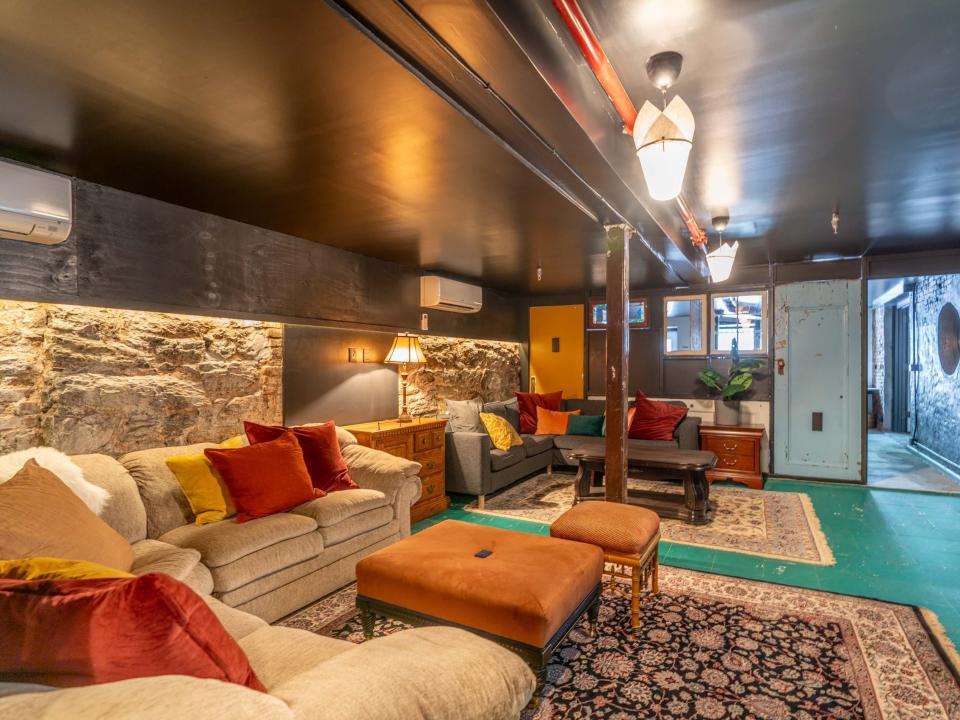
Steps away from the gym and basement kitchen is a lounge fitted with large L-shaped sofas, rugs, coffee tables, and a big TV.
It's near impossible to find something that all 28 roommates like to watch, as well as organize a time that everyone is free, but Elisa said at least a dozen people have managed to fit for past screenings.
The basement is where most residents hang out when they want to socialize, said Yäelle De Vroey, a resident of the Harlem house who also works for Cohabs as a designer curating furniture and interior decor.
"On weekends, it's amazing," De Vroey, 24, said of the parties, group dinners, and other activities. "There's always something happening here."
Upstairs, accommodations are divided into four "units," which act like distinct apartments.
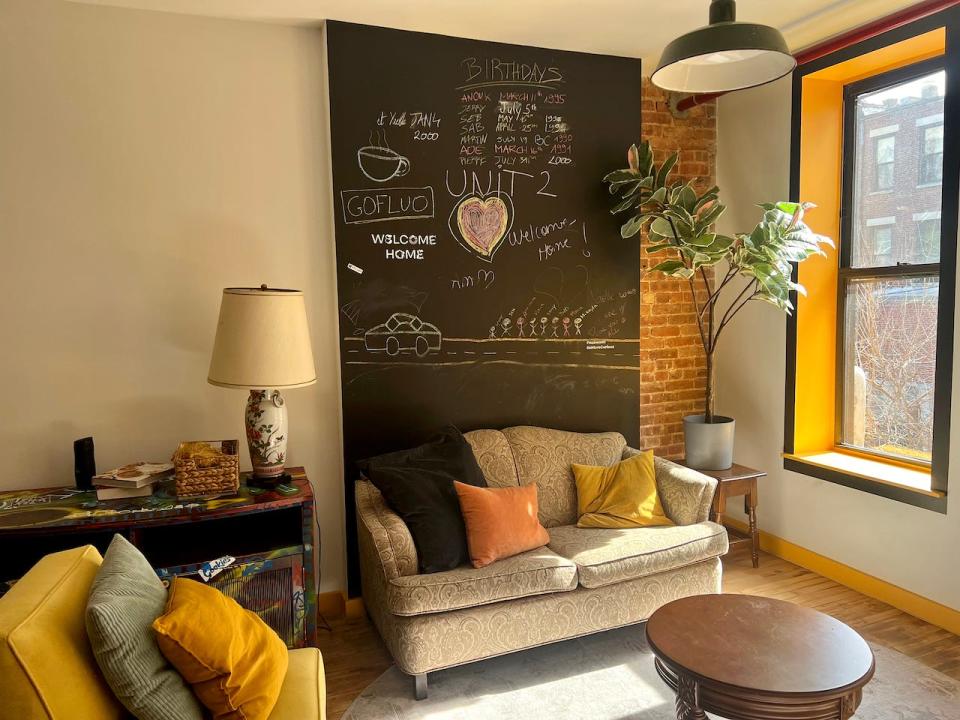
Living quarters at the Harlem Cohabs house are separated into "units."
Between four and six people live in a single unit, which is divided into several bedrooms, a lounge, and a kitchen. Units also come equipped with laundry, a prized amenity not every New Yorker can say they have.
Typical roommate squabbles about food and cleanliness are surprisingly rare, Elisa said, as the homes are cleaned professionally once a week and because residents have their own designated shelves in fridges and pantries.
"We've never even had to discuss that because everything is planned within Cohabs," she said.
Another beauty of the units, according to De Vroey, is that they provide a quieter place for members to hang out if they need a break from the busier common spaces.
"You kind of have your private space," De Vroey said. "But then, when you want, you can always go and see everyone else."
All of the units are furnished, which some residents love. They can also find ways to personalize the space.
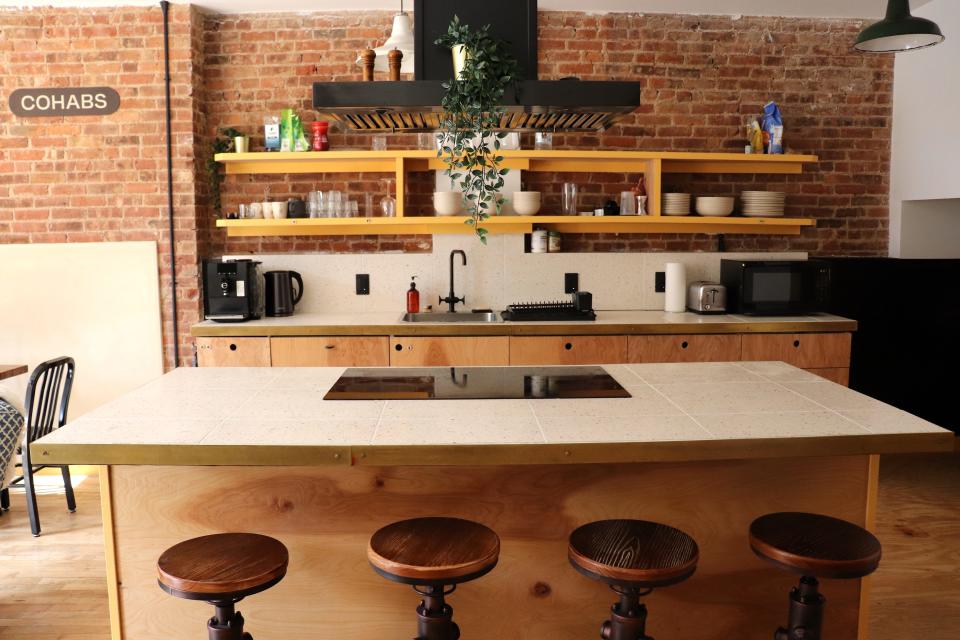
Like the rest of the house, the units come furnished and move-in ready. Clark said that the furniture is mostly secondhand, adding "personality" and color to the living spaces.
"You're honestly allowed to bring whatever you want, but everything's already furnished, so you don't really need it," De Vroey said.
For residents who want to add an extra personal touch, there is the option to buy furniture or decorations and "let loose" by drawing on black chalkboards featured in the common space in each unit, Clark said. Most of them are decorated with the names and birthdays of the residents.
Bedrooms within the units vary in size and price, and some are set up to accommodate couples.
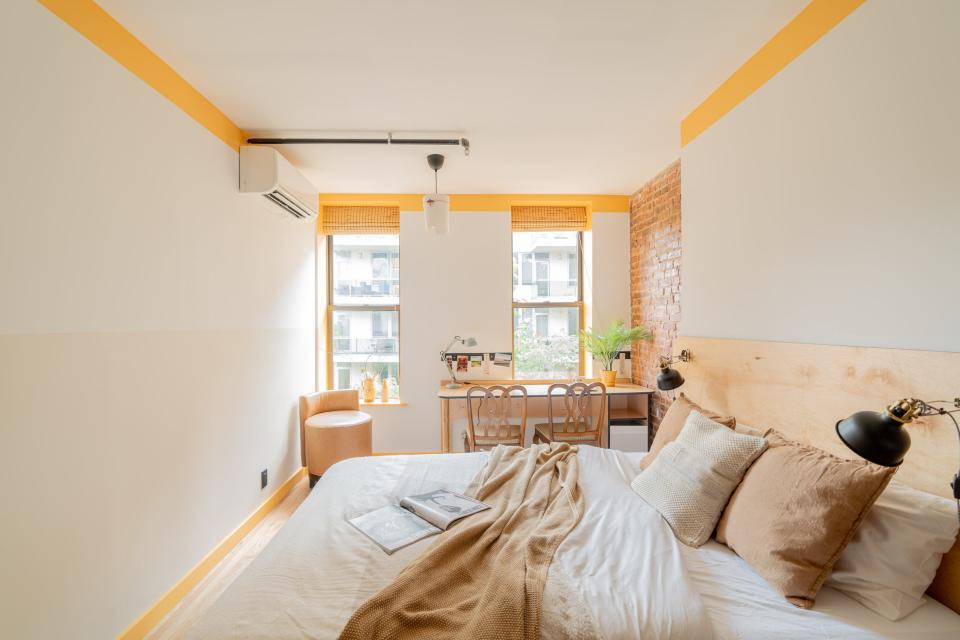
In the Harlem house, a few rooms are "bigger" and have extra wardrobes, desks, and a larger bed, to accommodate couples.
"We're still waiting for our first Cohabs baby," De Vroey joked.
Bathrooms are never shared by more than three residents.
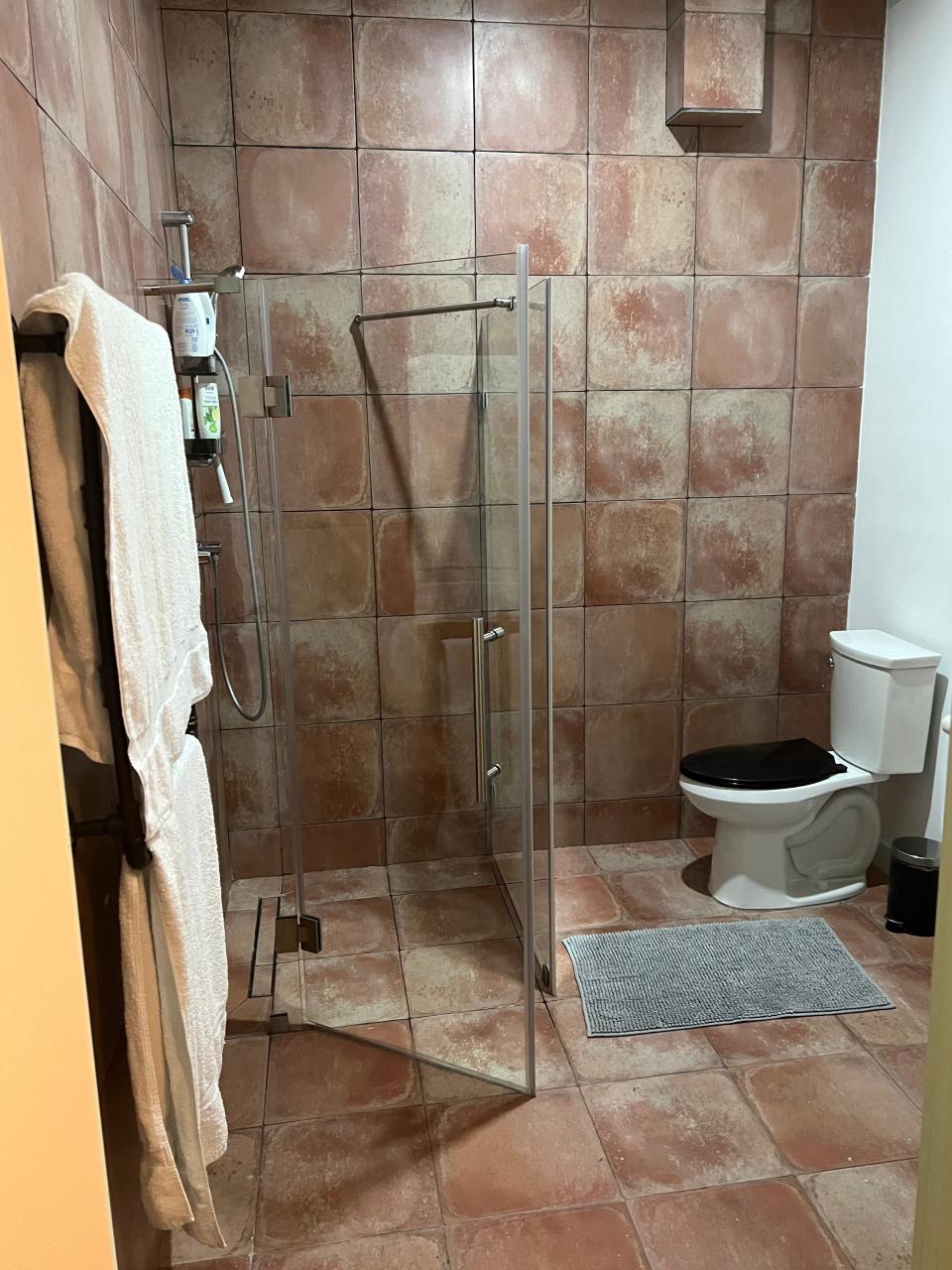
Residents who don't pay more for a private bathroom connected to their bedrooms have to share.
"There are like 14 private baths within this house," Clark said, adding that residents never have to share a bathroom with more than two other people.
Rayon pays around $2,000 a month for a room in Cohabs' Harlem townhouse.
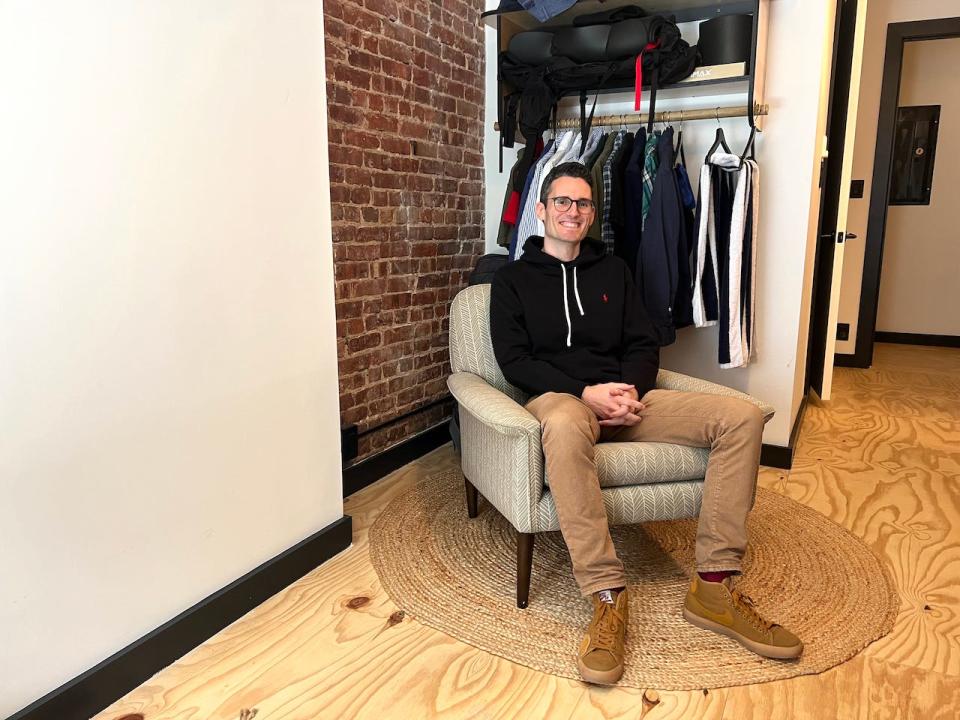
Rayon, a 36-year-old startup founder from Belgium, moved to NYC in 2023. He spent a few months living in a Cohabs location in Brooklyn before deciding it was too much of a "party area" and switching to the Harlem house.
Before Cohabs, Rayon had never lived in an official coliving space before but had spent time sharing a house with six other friends in Europe.
"That was some of the most amazing years of my life," he said.
Cohabs, he said, recreates that experience for people later in life when they are more financially stable.
"People go to university, they get their job, they settle down, and then they buy a house," he said. "They kind of skip that opportunity to take advantage of the fact that you're no longer a poor student."
Rayon thought his stay at Cohabs would be short-term, but he's open to living there for a longer stretch.
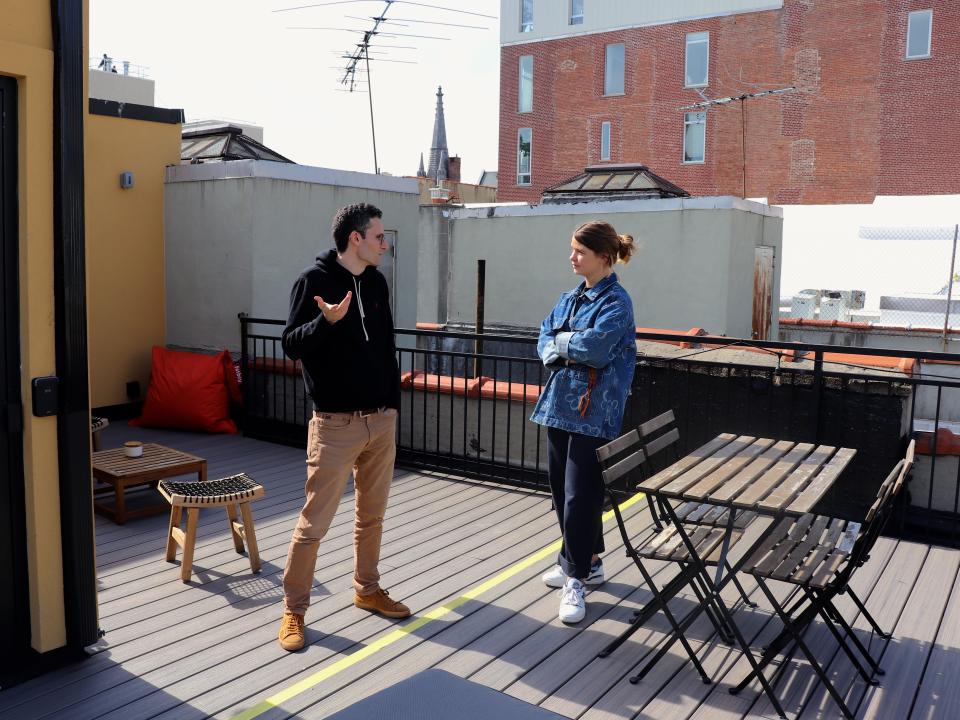
When Rayon first decided to live in a Cohabs location, he thought it would be a cool place to live for a few months and meet a few people while looking for a traditional apartment.
Nearly a year later, he's still living in a Cohabs house and hasn't thought much about when he'll move out, partially because of how most things are taken care of for him.
As a startup founder, he said he prioritizes pragmatism and efficiency, which is why the Cohabs lifestyle appeals to him. The home is cleaned once a week by professionals, there's an app to report any damage or maintenance issues, and the lease is relatively flexible.
"I don't have to think about cleaning or administration of any kind whatsoever except from giving my notice," Rayon said. "That's a huge mental relief."
Living in a Cohabs share house might not always be cheaper than traditional apartments, but Rayon said the amenities make it worth it.
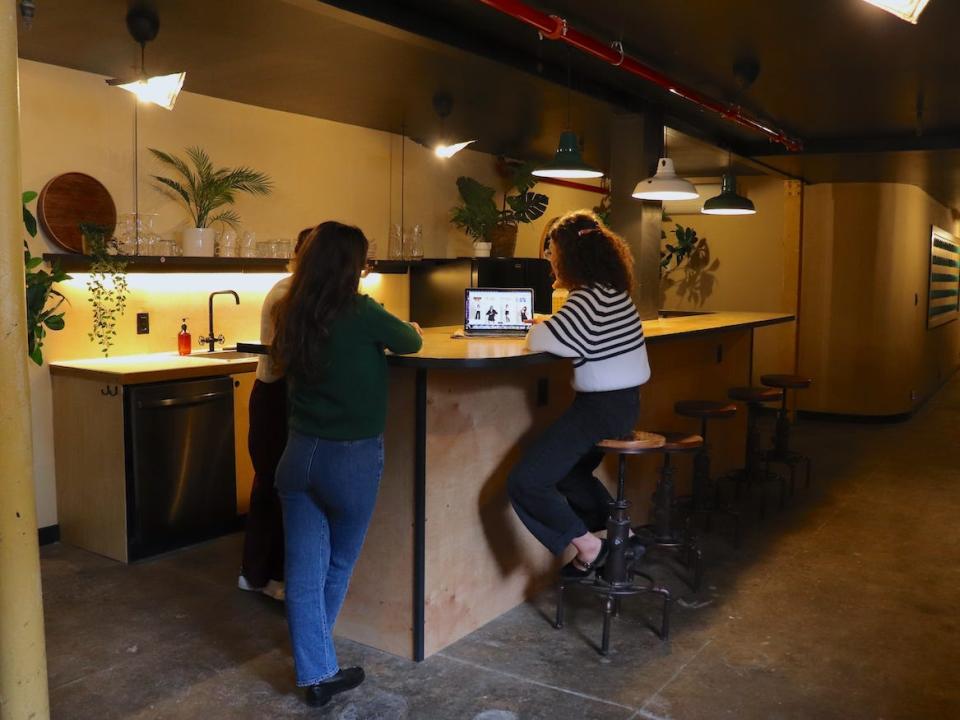
Rayon said the price he pays to live with Cohabs isn't necessarily cheaper than a traditional apartment in NYC, but he doesn't mind.
"I could go and rent out my own studio here in New York, but it would be a tiny shoebox, and then I'd have to get all these supplementary things," he said.
As Gen Zers and millennials grapple with a loneliness epidemic, it doesn't hurt that Cohabs gives its members a built-in social life.
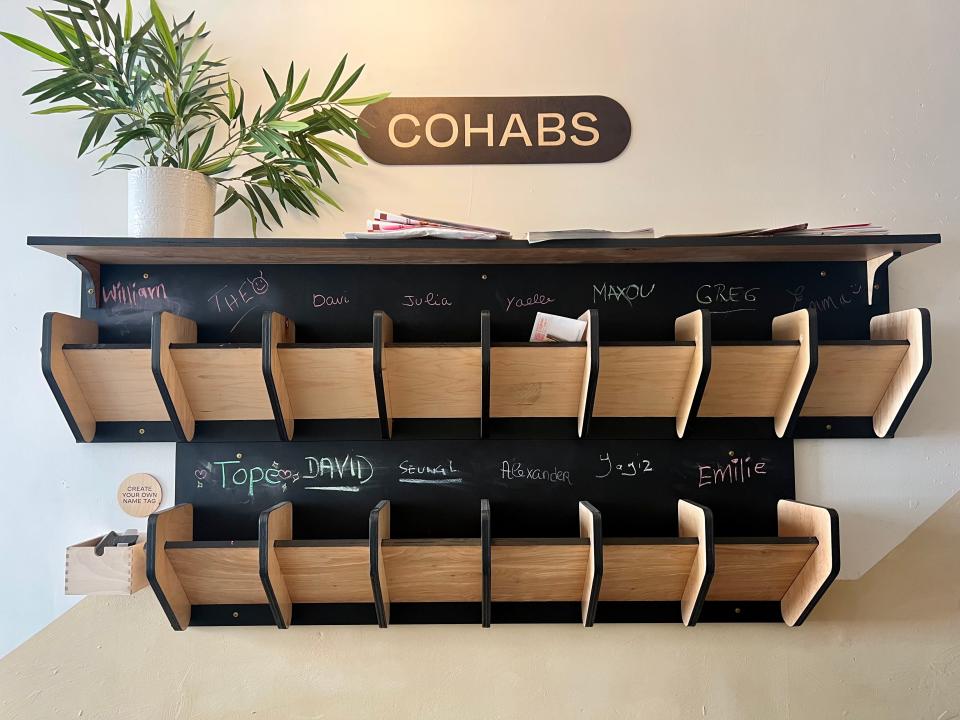
Amid the loneliness epidemic affecting Gen Zers and millennials, one of the biggest perks that several members swear by is that Cohabs provides them with friends the moment they move in.
It's even more of an appeal for members who have moved to NYC from abroad, including Rayon, Elisa, and De Vroey.
"I arrived in the US on the second of July last year, and like two days later, it was the Fourth of July. It was amazing. There was a party in my house," Rayon said. "It was as if I had been there for two years."
"When people say New York is the loneliest city in the world, I have not experienced that at all," he added.
Social events occur regularly across each Cohabs location in NYC, and all members are invited. Residents use WhatsApp groups to coordinate events like Super Bowl or Christmas parties, which help foster a tight-knit "bond" between residents, whether they're in their early 20s or their late 30s, De Vroey said.
Elisa said informal dinners are a "love language" among members. "Every Sunday last year during summer, we were cooking amazing dinners for everyone," she said.
Clark said some Cohabs residents stay for long periods of time.
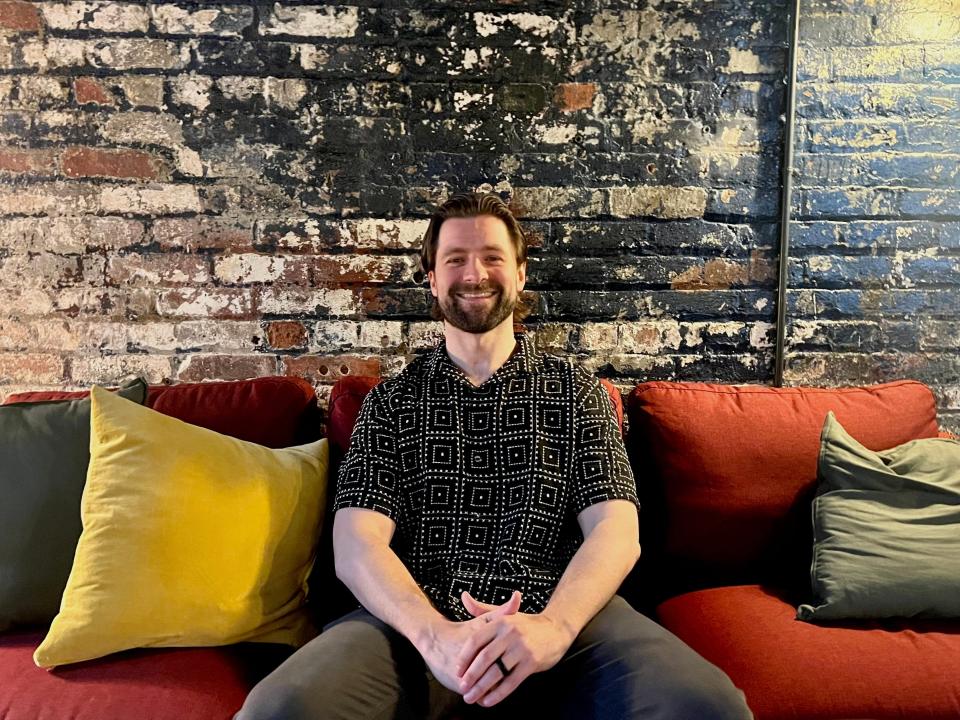
Clark said Cohabs isn't interested in filling up houses with residents interested in only staying a few months.
"This is not transient housing, to be crystal clear," he said, adding that the average person lives in a Cohabs share house for 11 months at a time.
Clark said another thing that helps set the company apart is that Cohabs has a strategy to "buy and hold the assets," meaning that the company owns its buildings and can "pocket" cash to invest back into creating a real home for its members.
Cohabs may have fans in NYC, but it might need to tweak its model to expand across the US.
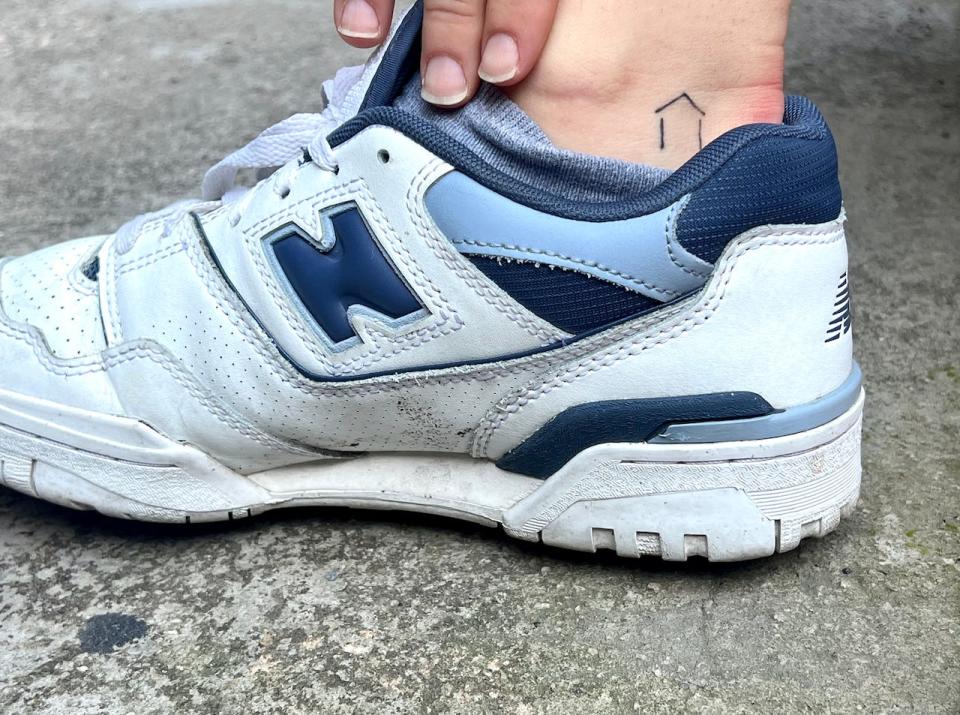
Part of the reason Cohabs' attempt to enter the US market has been successful so far is because it began operations in NYC, Clark said.
Many people moving to the city are younger and unmarried, the prime target audience for a coliving concept like Cohabs, Clark added. It's also a hub for international residents — many of whom move to NYC alone and seek a sense of belonging.
But to replicate Cohabs' success elsewhere in the US, Clark said the company might have to consider tweaking the model to accommodate other aspects of American culture.
"As we go into new markets where there's less and less of an international vibe, we're going to have to be more sensitive to what is more palatable to Americans in general," Clark said.
One of the ways Cohabs is considering doing that is through smaller coliving spaces that more closely resemble a traditional housing model — spaces shared by six to eight people instead of nearly 30.
In that way, "people can still get to know each other and form really strong bonds" without it being "overwhelming," Clark said.
For several residents of the Harlem house, including De Vroey, the experience has been so positive that they've immortalized it with matching Cohabs-themed tattoos.
It suits her in a way that a traditional roommate setup might not.
"If you were in a smaller apartment or in a smaller house, you would want to get out," she said.
But in the Harlem townhouse, equipped with its kitchens, lounges, and private bar, De Vroey said there aren't many excuses to leave.
"I almost don't want to get out," she said.
Read the original article on Business Insider

